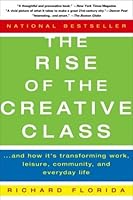by Andrew Wyllie
Lexington is a city with a lot of potential.
Richard Florida’s book, ‘The Rise of the Creative Class’, provides a method of measuring a city’s desirability as a place to live for the creative class. His analysis breaks down a city’s potential in three categories: Talent, Technology and Tolerance (the three T’s of economic development). In order for a city to be attractive to the creative class, it must be able to rank highly in all three areas.
The index is fairly easy to use, a city’s talent can be measured by looking at the number of people in the city with college degrees especially architects, doctors, software engineers and MBAs. Lexington already scores higher than most cities on this index. Technical competence of a city is evident through the number of patents generated by firms and universities. Lexington possesses a world class University which attracts many talented professionals to the city. The University of Kentucky’s mission to become a top 20 University will fuel this migration of talent into the city. In essence, if they can bring in a few top people the rest will follow.
Possibly the biggest hurdle to overcome is the reputation the state of Kentucky has with respect to tolerance. Florida measures a city’s tolerance with something he calls the gay-bohemian index. This is simply a measure of how accepted gay couples are in a particular city. The numbers for the index can be gleaned from census data by looking for households with gay couples, a higher number indicates a higher tolerance. In the previous election though, 75% of Kentucky voters voted to ban gay marriage and civil unions. I can remember being somewhat stunned by this result after the election as for me this is an issue about basic human rights and should really not have any place in state politics. Fortunately, there are other examples of cities that have managed to break through stereotypes placed on them by the state they are located in. Austin, Texas is a great example although Austin is quite a bit bigger than Lexington (but then again, everything is bigger in Texas). Lexington ranks fairly highly of Florida’s gay tolerance index but this is true for most urban areas
While an index is useful as a measurement, it is not necessarily a ‘be all and end all’ solution with respect to the desirability of a city towards members of the creative class. A city can score high on the index but be on it’s way down, with members of the Creative Class moving to more hip and lesser known cities. For example, Seattle and San Francisco are both great cities, but people are starting to leave as they find the cost of living is just too high and the morning commute is just not worth the hassle anymore. In my experience, the real leaders of the Creative Class are always on the lookout for the next great thing. They don’t sit around analyzing indexes and whatnot “oh look, I see Lexington is scoring really high on this talent index, we should go there and check it out”, it’s more of a word of mouth thing – “Hey I hear Lexington Kentucky is the place to be these days, they have awesome cycling and a great bar scene downtown”.
Lexington’s planners need to encourage density and mixed use zoning, especially in the downtown core. Mixed use zoning means that people can work and shop very close to where they live as opposed to big sprawled out suburbs where you have to drive everywhere. Jan Jacobs, a well know urban planner, was a big advocate of designing cities for people not cars. These spaces like SOHO in New York City and the St. Laurence Market area in Toronto (which she helped plan) are areas where people can live, work and shop without requiring a car to get around. Other amenities which attract the creative class include bike paths and wide sidewalks with street side cafes, farmers markets and other public spaces. Since downtown Lexington is not very built up right now, there is a huge potential to convert (not tear down) some of these older buildings into stores, restaurants, bars and housing. Relaxing liquor laws does not hurt either like this idea to allow people to walk around with open alcohol in certain areas – the creative class does not like to be burdened by rules.
I think the technology, talent and tolerance already exist here – we are the creative class. Now we need to use our creative energy to create a city the city that we want as opposed to trying to emulate other cities around the country. It’s this pure honesty about who we are that will make our city more attractive and give it a unique character that will help us realize our full potential.



![Reblog this post [with Zemanta]](http://img.zemanta.com/reblog_e.png?x-id=ff9838a5-5134-4d58-bdc4-dc3f75d59ef7)





